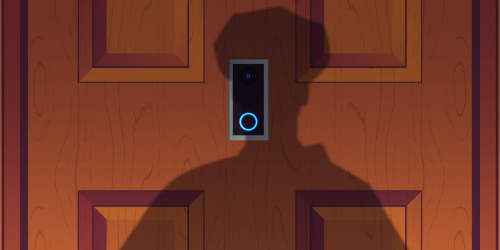
The Los Angeles Times reported last week that the FAA has issued 1,428 permits to domestic drone operators since 2007 and noted this was “far more than were previously known.”
This new number points out again how difficult it is to answer the most common questions EFF gets from reporters about drones — just how many agencies have applied for drone licenses? How many licenses has the FAA issued since it started issuing licenses (which was earlier than 2007)? And how much has domestic drone use increased over the years?
Unfortunately, the FAA has made it impossible to answer these questions. We’ve been tracking drone flights in the United States for several years now through our two Freedom of Information Act lawsuits against the Federal Aviation Administration, and we currently have more information on domestic drone flights than anyone other than the FAA. But thanks to discrepancies among various drone numbers the FAA has released—to EFF, to the Government Accountability Office and to members of Congress—it’s anyone’s guess exactly how much drone authorizations have increased over the years.
Here’s a summary of the various numbers the FAA has released. See if you can make sense of them.
July 2010: | The FAA stated in a Fact Sheet that it issued 71 "experimental certificates" since July 2005 (Source: July 15, 2010 FAA Fact Sheet (since taken down from the FAA website)) |
April 2012: | The FAA told EFF that 61 public "proponents" had applied for drone licenses since the agency's drone licensing program began in November 2006. The FAA has also said these 61 proponents applied for approximately 750 Certificates of Authorization (COAs). (Source: FAA list provided to EFF and EFF's FOIA litigation) |
July 2012: | The Government Accountability Office reported that "[b]etween January 1, 2012 and July 17, 2012, FAA had issued 201 COAs to 106 federal, state, and local government entities across the United States, including law enforcement entities as well as academic institutions." (Source: July 2012 GAO Testimony on Unmanned Aircraft Systems (pdf, p.2)) |
September 2012: | The Government Accountability Office reported that "[b]etween January 1, 2012, and July 13, 2012, FAA issued 342 COAs to 106 federal, state, and local government entities across the United States, including law enforcement entities as well as academic institutions." (Source: September 2012 GAO Report on Unmanned Aircraft Systems (pdf, p.7)) |
September 2012: | The FAA told Representatives Markey and Barton that, as of September 2012, 228 public drone license "sponsors" had a current, expired, or disapproved COA. (Source: FAA list provided to Representatives Markey and Barton. (pdf, p.6)) |
January 2013: | The FAA told EFF that 81 public drone license "proponents" had applied for COAs between July 2011 and October 2012. (Source: Second FAA list provided to EFF) |
February 2013: | The LA Times and the Government Accountability Office reported that the FAA has issued 1,428 permits to domestic drone operators since January 2007. The Times notes that "some 327 permits are still listed as active." (Source: Los Angeles Times; February 2013 GAO Report (pdf, p.3)) |
There are other discrepancies. Of the 228 entities on the list released to Representatives Markey and Barton in September 2012, at least 28 are not on either of the lists the FAA provided to EFF, despite the fact that the FAA has assured EFF—as part of our litigation—that EFF’s lists include all public entities that have applied for drone licenses. These missing entities include the following:
- Bastrop County Texas Emergency Management Coordinator
- Becker Soil & Water Conservation District (city of Minnesota)
- Center for Interdisciplinary Remotely Piloted Aircraft Studies
- City of El Dorado, KS
- Clackamas County Sheriff's Office
- Colorado Department of Transportation
- Department of Military and Veterans Commonwealth (PA)
- Florida Atlantic University
- Jacksonville District Corps of Engineers
- New Mexico Tech at Playas Training & Research Center
- SPAWAR Systems Center
- Stark County Sheriff Department
- Texas Rangers
- EPA
And a number of State National Guard offices:
- California Air National Guard
- Guam Army National Guard
- Illinois Army National Guard
- Iowa Army National Guard
- Louisiana Army National Guard
- Michigan Army National Guard
- Minnesota Army National Guard
- New Mexico Army National Guard
- Ohio Army National Guard
- Oklahoma National Guard
- Oregon National Guard
- Tennessee Army National Guard
- Texas National Guard
- Virginia Army National Guard
And, by the FAA’s own admission, the list provided to Markey and Barton does not include classified drone applications.
Why can’t the FAA provide accurate drone license information that the public can rely on? Is it because the agency doesn’t want the public to know? Or is it that the FAA, itself, doesn’t know because it hasn’t kept track of its own program? Both of these possibilities raise serious issues about how the government is managing drone licenses and whether drone use should be allowed to expand in the United States.
The only way we can have an open and full debate about domestic drone flights is if we have accurate, complete, up-to-date and reliable data on how many entities are licensed to fly drones, who those entities are, and how many licenses the FAA has issued for each year it’s issued licenses. EFF shouldn’t have to keep suing the FAA to get this information.











